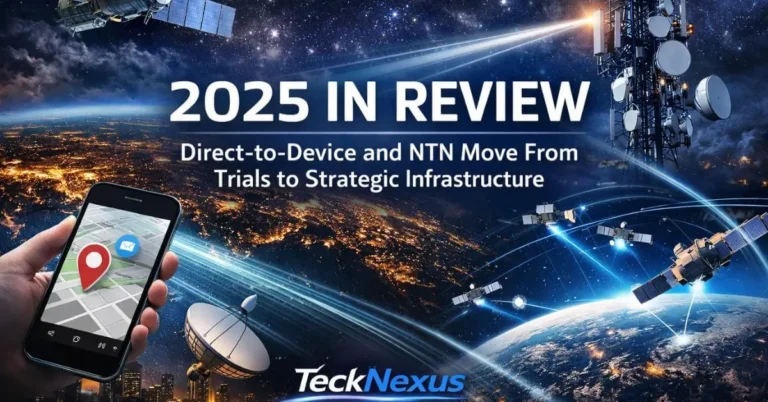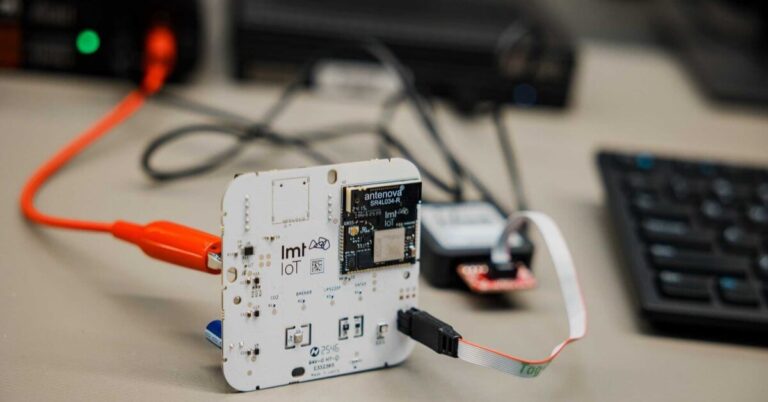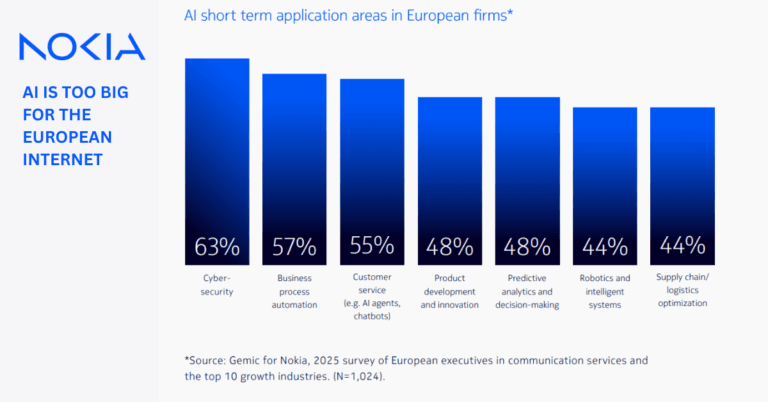Equatys: Standards-based NTN D2D with global MSS spectrum
Space42 and Viasat plan to form Equatys, a joint venture designed to deliver standards-based Direct-to-Device (D2D) connectivity to smartphones and IoT devices over a unified satellite–terrestrial network.
3GPP NTN launch plan for 5G smartphones
The partners intend to launch a 3GPP Non-Terrestrial Network (NTN) platform that integrates with 5G networks and works with unmodified handsets and IoT modules. The companies say Equatys will aggregate well over 100 MHz of harmonized Mobile Satellite Services (MSS) spectrum already assigned across more than 160 markets, describing it as the largest coordinated block available for this purpose. Commercial service is targeted within three years, with an initial focus on evolving current MSS offerings and enabling native 5G NR NTN features for mass devices.
Neutral-host space tower model for D2D
Equatys positions itself as a neutral “space tower” operator that multiple licensed service providers can share, rather than a vertically integrated, single-operator network. The shared, multi-tenant model aims to lower capacity costs, reduce duplicative investment, and accelerate coverage for partners spanning mobile network operators (MNOs), IoT platforms, government agencies, and enterprise solution providers.
Why NTN-based D2D matters now
D2D is moving from trials to commercial roadmaps, and the market is coalescing around 3GPP NTN standards, device integration, and scalable spectrum strategies.
Competitive landscape for direct-to-smartphone
Competition is intensifying as MNO–satellite alliances and satellite-first players push toward direct-to-smartphone services. Early models have proven niche use cases—emergency messaging, basic SMS, narrowband IoT—but nationwide roaming, voice/data at scale, and multi-orbit resiliency remain unresolved. Equatys adds a new archetype: a standards-aligned, neutral-host infrastructure that invites carriers and governments to tap shared space assets without ceding control of customer relationships.
Scaling via harmonized MSS spectrum
Beyond technology, spectrum scale will determine economics and quality, and Equatys’ planned access to a large, coordinated MSS block across 160+ markets could be a differentiator. Harmonized spectrum improves link budget predictability, device RF design, and cross-border service consistency, which are essential for consumer-grade D2D and global IoT roaming. If executed, this could move the segment from boutique services to broad coverage and higher throughput tiers.
Technology roadmap and 3GPP NTN standards
The venture’s technology roadmap aligns with 3GPP NTN releases and 5G NR, aiming for compatibility with mainstream devices and operator cores.
5G NR NTN features and integration
Equatys plans to implement 3GPP NTN features to enable mobility management, beam-aware scheduling, and timing compensation for handset-class links. Using 5G NR as the anchor allows carriers to extend coverage maps, policy, and charging to non-terrestrial footprints through familiar interfaces. This also supports incremental capability growth as 3GPP evolves NTN in Rel-18/Rel-19, including enhancements to throughput, power efficiency, and service continuity.
Multi-orbit design and handset compatibility
The partners cite high-performance transparent satellite architectures and shared ground infrastructure to keep payloads efficient and shift complexity to software-defined networks on the ground. Multi-orbit operation enables resiliency and service tiering—low-latency links where needed, broad-area coverage elsewhere—while remaining within the RF and power constraints of standard smartphones and compact IoT devices.
Operating model: Neutral satellite infrastructure
Equatys intends to operate like a neutral host for space, offering shared infrastructure that complements terrestrial networks rather than competing with them.
Shared satellite and ground infrastructure
The model mirrors towercos and neutral-host small cells: a centralized, shared asset base with wholesale access for multiple licensed operators. By pooling satellites, gateways, and control systems, Equatys seeks to deliver lower unit costs per bit and faster market entry across regions. This design also supports coexistence of multiple spectrum assignments on a single global platform, improving utilization and reducing fragmentation.
MNO and IoT integration benefits
For MNOs, the appeal is coverage extension without massive capex, with the option to preserve branding, tariffs, and customer experience. For IoT providers, NTN can add ubiquitous reach for logistics, utilities, agriculture, and critical infrastructure, particularly outside terrestrial footprints. The venture also highlights safety services across land, air, and sea, signaling continuity with legacy MSS use cases while modernizing through 5G NR NTN.
Investment, governance, and sovereignty options
The venture’s financing and governance framework is designed to attract infrastructure-grade capital while enabling national control where required.
Infrastructure-grade returns and phased funding
The partners propose agreements that bring capital-intensive space and ground assets online at the lowest cost to licensed operators, with phased equity openings for strategic and financial investors as the system scales. For investors, the thesis resembles traditional digital infrastructure: predictable, wholesale revenues with upside from capacity densification and new services.
Sovereign deployment and sustainability
Equatys emphasizes sovereign deployment pathways so governments can maintain data and operational control where policy requires it. The program also references space sustainability, aiming to minimize orbital footprint and maximize resource efficiency—important for regulatory goodwill and long-term operations.
Implications, risks, and key signals
Execution risk remains significant, but clear milestones can help operators and partners calibrate engagement.
Execution risks and dependencies
Major risks include securing multi-country regulatory approvals, coordinating spectrum across incumbents, delivering reliable handset-class links at scale, and integrating with diverse operator cores and devices. Supply chain constraints in launch, payloads, and RF front-ends could shift timelines. Service-level expectations—latency, availability, priority access, and emergency call support—must align with consumer and enterprise needs, not just proof-of-concept demos.
Milestones to watch in 12–36 months
Watch for: finalized JV terms and governance; spectrum usage and coordination agreements; satellite deployment schedules and ground segment readiness; 3GPP NTN feature availability in major handset chipsets and modules; MNO and OEM launch partners; early service pilots beyond messaging; and clarity on wholesale pricing models. Progress here will indicate whether Equatys can turn spectrum scale and standards alignment into commercial momentum.
Actions for telecom leaders now
Enterprises, MNOs, and OEMs can position early to benefit from D2D once commercial services arrive.
Planning guidance for NTN adoption
Map coverage gaps and prioritize use cases that benefit from NTN—public safety, rural broadband augmentation, maritime/aviation, and critical IoT. Update core network roadmaps for 3GPP NTN integration, policy control, and charging. Align device portfolios with chipsets supporting 5G NR NTN features and evaluate required RF front-end changes. Engage regulators early on numbering, lawful intercept, emergency services, and data sovereignty.
Near-term NTN pilot ideas
Run controlled pilots for messaging continuity, critical IoT telemetry, and mission-critical push-to-talk over NTN. Validate service handover, billing, and customer experience across terrestrial and satellite domains. Use results to build business cases for wholesale capacity, roaming agreements, and go-to-market bundles that combine terrestrial 5G with NTN-based reach.








































